Adding 2 Digit Numbers Using Standard Algorithm
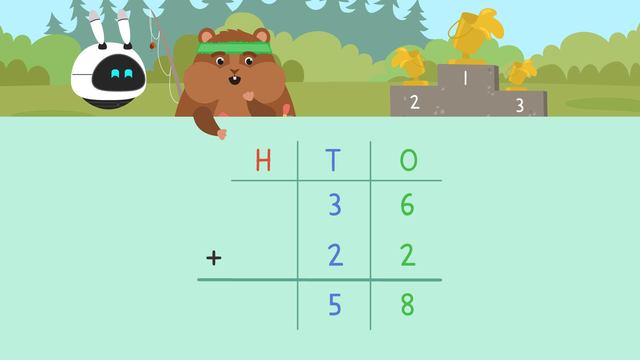

Basics on the topic Adding 2 Digit Numbers Using Standard Algorithm
Adding Two Digit Numbers
Imagine you own 14 toys and your sibling owns 17 toys. Now you want to calculate how many toys you own together! In order to do this, you can use standard algorithm to solve 2 digit addition without regrouping and 2 digit addition with regrouping.
In this text, we will learn how to do 2 digit addition using the standard algorithm.
The standard algorithm is a method to use where the numbers are set up vertically, based on place values. This is an efficient way to find sums when there are several equations you need to solve.
In the explanation, there will be examples that have you adding 2 digit numbers without regrouping as well as adding 2 digit numbers with regrouping.
Adding Two Digit Numbers – Example

To solve this 2-digit addition problem, we set the equation up vertically, with one addend on top of the other in order of their place values. We will find the sum of the numbers by adding the digits from right to left, beginning with the ones place.
What is six plus two more?
Place the eight below the line directly under the ones place.
Next, we move one place over to the left and now we add the tens place.
How many are three tens and two tens? We can write the digit five below the line under the tens place because the five represents five tens or fifty.
The sum is 58.

In this problem, we will need to do 2-digit addition with regrouping. We are going to find the sum of fourteen and forty-seven.
Starting with the ones place, four plus seven equals eleven. What do you notice about the sum of the ones place?
Eleven is a two-digit digit number made up of a one and one ten. So, one is written underneath the ones place and one is regrouped on top of the tens place.
Now we add the tens, including this new value added at the top. What is the sum of ten, forty, and ten? Sixty, which means we have six tens.
The sum is 61.
Do you now know how many toys your sibling and you own together? Correct, it is 31 toys in total! For this equation, you needed to regroup a number.
Adding Two Digit Numbers – Additional Practice
How do you add two digit numbers using the standard algorithm?
Remember: The standard algorithm is a method to use where the numbers are set up vertically, based on place values.
With the standard algorithm you can represent an addition of two numbers neatly to solve it with ease. Have another look at our example addition from earlier:
| Tens | Ones | |
|---|---|---|
| 1 | 4 | |
| + | 4 | 7 |
| 6 | 1 |
At the end of the video, you can find exercises for the continued practice of 2 digit addition as well as a 2 digit addition worksheets. Enjoy!
Transcript Adding 2 Digit Numbers Using Standard Algorithm
Mr. Squeaks and Imani are taking part in the annual lake clean-up contest. They are hoping this is the year they will take their place on the winners' stand! Although the real reward is a clean lake, the winner of this contest will be the participant that collects the greatest total weight of trash. In order to find the winner, we need to use an efficient or quick, way of adding sets of numbers called Standard Algorithm. : " Adding Two-Digit Numbers Using Standard Algorithm" Let’s look at the items our contestants have retrieved from the lake(…) As you can see we have several two-digit addition problems to solve, so we will want to use the best way to find the sums without having to do a lot of steps. Let's use the spotted mouse's numbers as an example. Spotted Mouse collected a thirty-six-pound bike and a twenty-two-pound chair. You already have been shown how to add two-digit numbers using number lines and the base tens blocks. In the standard algorithm, we use those same ideas, but we simplify the problem. We set the equation up VERTICALLY, with one addend on top of the other in order of their place values. "We line up the place values by putting the two UNDERNEATH the six and the two tens under the three tens." Make sure to include the "addition sign". We always want to remember what we are supposed to be doing with the numbers. "We will find the sum of the numbers by adding the digits from RIGHT TO LEFT, beginning with the ones place." "What is six plus two more?" Place the EIGHT below the line directly under the ones place. "Next, we move one place over to the left and now we add the tens place." How many are three tens and two tens? We can write the digit five below the line under the tens place because the five represents five tens or fifty. Spotted Mouse collected FIFTY-EIGHT pounds of trash. Let’s try it out with Imani's catches and see how she did. We are going to find the sum of fourteen and forty-seven. "Starting with the ones(...) four plus seven equals ELEVEN." What do you notice about the sum of the ones place? "Eleven is a two-digit number made of one one and one ten." So one is written underneath the ones place and one is regrouped ON TOP of the tens place. Now we add the tens, including this new value-added at the top. What is the sum of ten, forty, and ten? Sixty(...)so, we have six tens. Imani took sixty-one pounds of trash from the lake(…)WOW! There is one more contestant that needs their collection rounds added(...)our own, Mr. Squeaks! How did Mr. Squeaks do in the contest? We set up the problem by writing the sixty-five over the seventy-four. "We add five and four in the ones place and get nine." No regrouping is needed. "We add six and seven in the tens place and that made thirteen tens." Hmmm(...)we have more than one digit in this answer… ..based on the last problem, can you think what we need to do next? When we have a two-digit sum, we'll regroup it to the next place value. "The next place value is the HUNDREDS." Because thirteen has a value GREATER than ten, we regrouped the final digit, ONE, to the hundreds place. "Mr. Squeaks has ONE HUNDRED THIRTY-NINE POUNDS!" Remember in standard algorithm, we line up numbers vertically, or one top of the other, based on place values. "We start adding with the ones place and move to the left to add the tens." "Sometimes we need to regroup into the next place value when our sum is greater than ten." Let’s head back to the leader board and see about declaring a winner! YES!!! HE DID IT!! Mr. Squeaks has taken first place! Congratulations Mr. Squeaks(…)WELL DONE! You've won the trophy AND everyone made the lake beautiful again!
Adding 2 Digit Numbers Using Standard Algorithm exercise
-
Calculate the answer.
HintsAdd the digits in the ones column first.
Then add the digits in the tens column.
SolutionAdd the digits in the ones column first.
4 + 5 = 9
Then add the digits in the tens column.
3 tens + 2 tens = 5 tens
34 + 29 = 59
-
Place the digits onto the grid.
HintsMake sure the ones are in the O column.
The H column represents hundreds.
SolutionWe need to make sure the numbers are in the correct column.
If it has 3 digits, it will have a hundred, tens, and ones digit.
310 has 3 hundreds, 1 ten and 0 ones
27 has 2 tens and 7 ones
Then add each column.
0 + 7 = 7
1 ten + 2 tens = 3 tens
3 hundreds + 0 hundreds = 3 hundreds
310 + 27 = 337
-
Calculate the answers to the equations.
HintsAdd up the ones column first.
Make sure if your answer is 2* or more digits, you carry it across.
After adding the ones column, move on to the tens column.
Don't forget to check if there are any numbers that you carried across from the ones column.
SolutionSee image for the 1st problem.
For the 2nd problem:
45 + 63 = 108
For the 3rd problem:
44 + 12 = 56
For the 4th problem:
69 + 72 = 141
-
Match the question to the correct answer.
HintsAdd up all of the digits in the ones column first. If the answer is greater than 9, carry across the extra ten.
If the number in the tens column is greater than 9, make sure you carry across to the hundreds column.
SolutionUsing the layout above, work out the answers to the equations.
- First add your ones column.
- Don't forget if your answer from adding the ones column is 2 digits, carry the tens number from your answer across to the tens column.
- Next, add your tens column.
- If your answer from the tens column is more than 2 digits, carry across the hundreds digit (the first digit from the number).
38 + 64 = 102 see image above
27 + 35 = 62
39 + 54 = 93
74 + 57 = 131
-
Identify the place value of the numbers below.
HintsIf the number has two digits and ends in a zero, it is a ten.
If it is a single digit, it is a one.
SolutionIn this example, you can see how all the one numbers are in the O column. We have a mixture of words, numerals and Base 10 images.
In the tens column we have a mixture of words, numerals and base 10 images. They all show values of ten
-
Calculate the answers to the equations.
HintsSolutionFirst, add the digits in the ones column.
4 + 7 = 11. 1 ten would go into the tens column with the other tens digits, and the 1 representing the ones would go in the answer box under the ones.
Then, add all of the digits in the tens column.
1 + 8 + 3 = 12
As the answer to this is greater than 9, we need to carry across to the hundreds column.
33 + 42 = 75
18 + 71 = 89
84 + 37 = 121
69 + 33 = 102
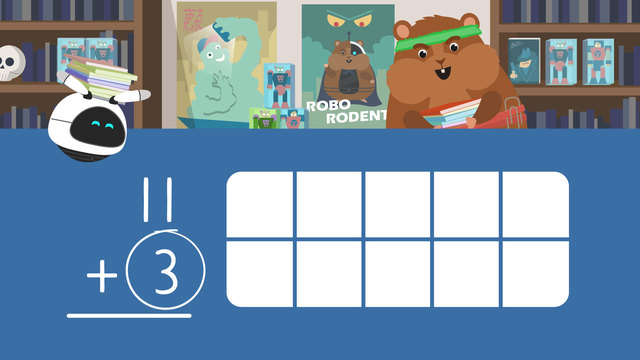
Adding a 1-Digit Number to a 2-Digit Number
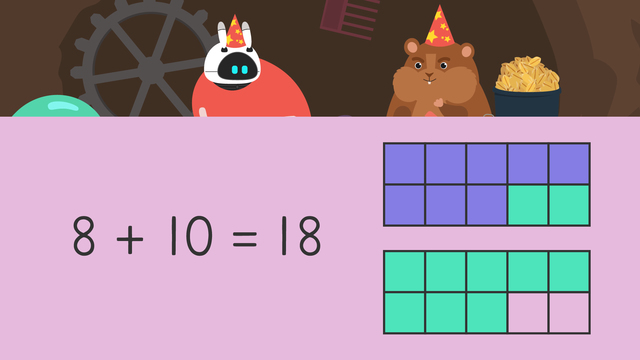
Order in Adding
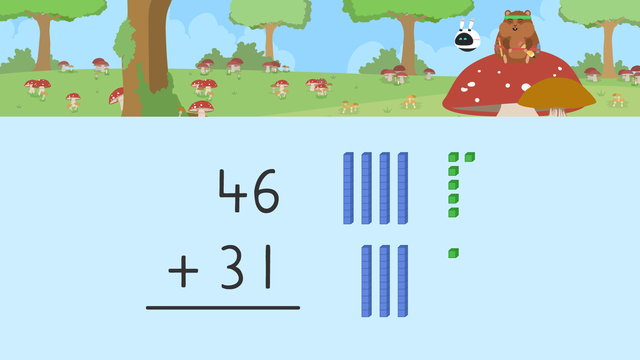
Using Place Value to Add
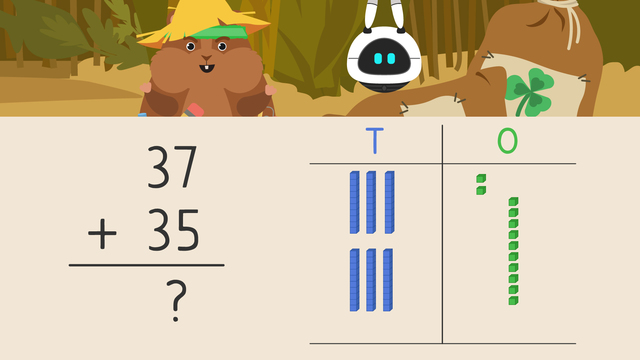
Using Place Value to Add Two Digit Numbers (Regrouping)
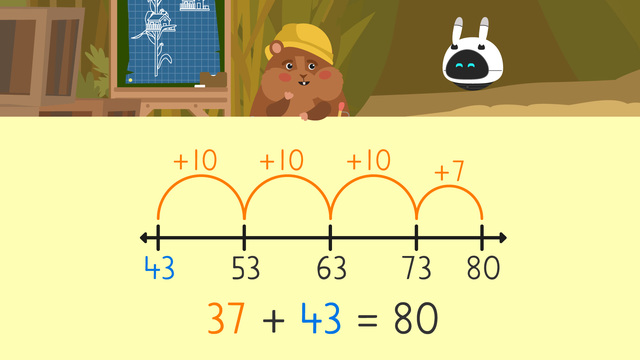
Make a Number Line to Add
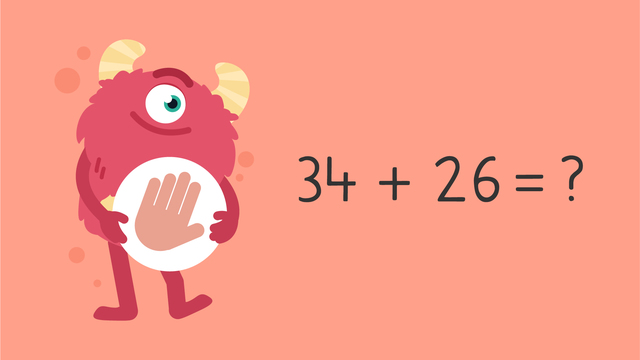
Make a Number Line to Add — Let's Practice!
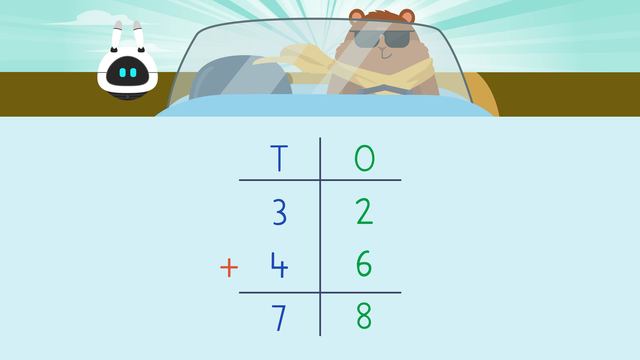
Addition Using Expanded Form
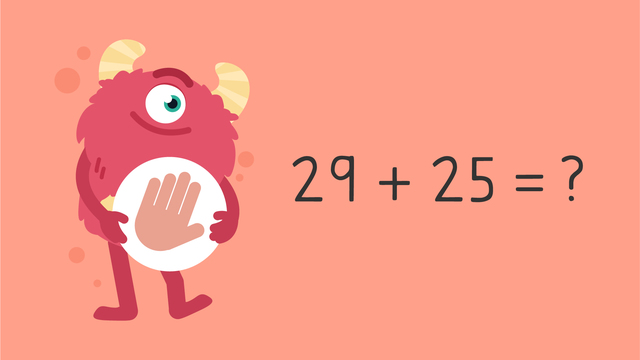
Compensation in Addition — Let's Practice!
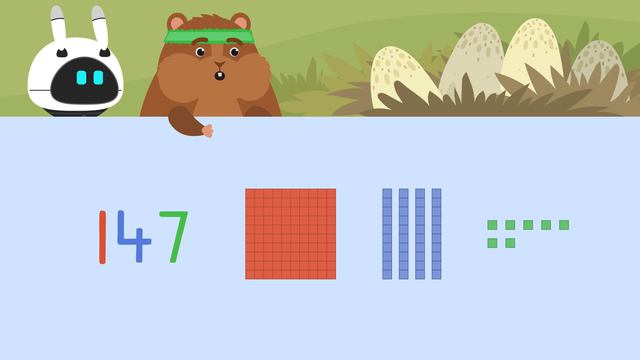
Addition with Regrouping - Ten
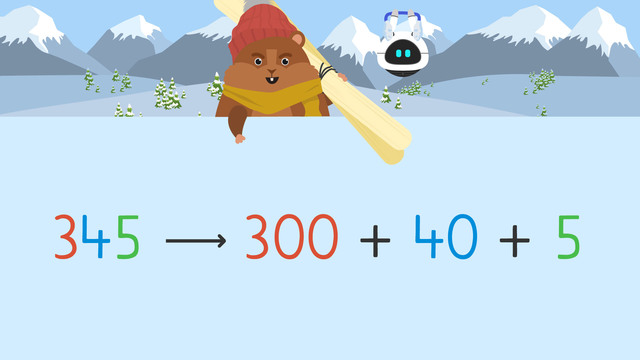
Three Digit Addition with Regrouping - Expanded Form

Adding 2 Digit Numbers Using Standard Algorithm
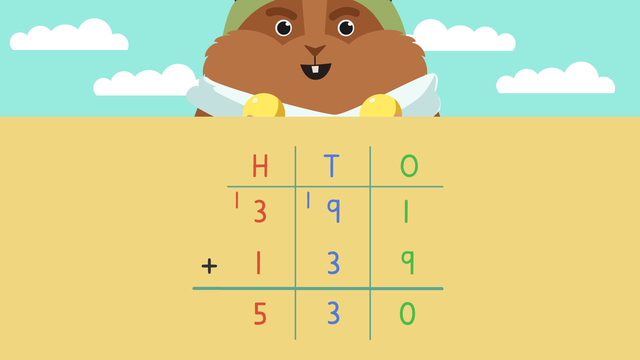
Adding 3 Digit Numbers Using Standard Algorithm
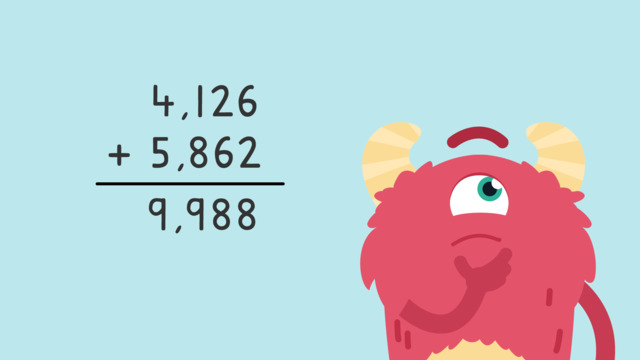
Adding Larger Numbers — Let's Practice!
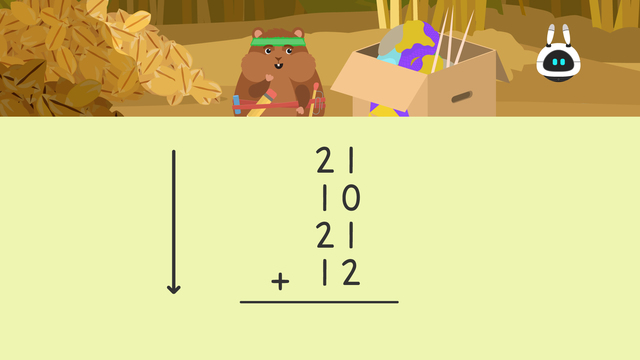
Adding Four Two Digit Numbers









